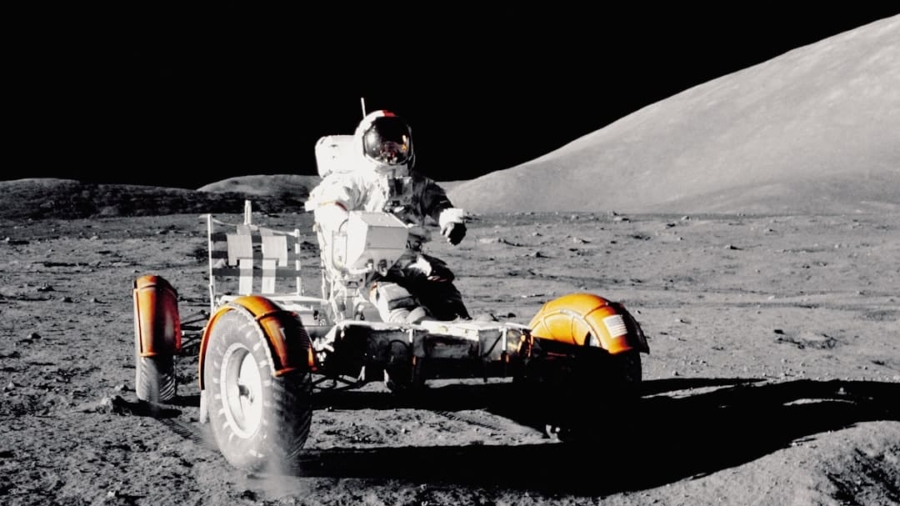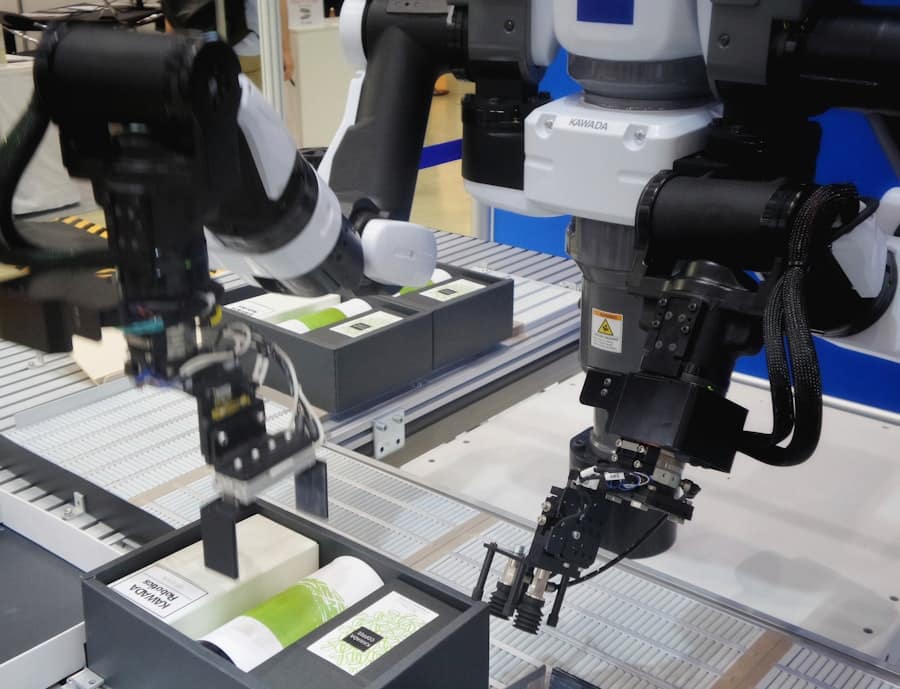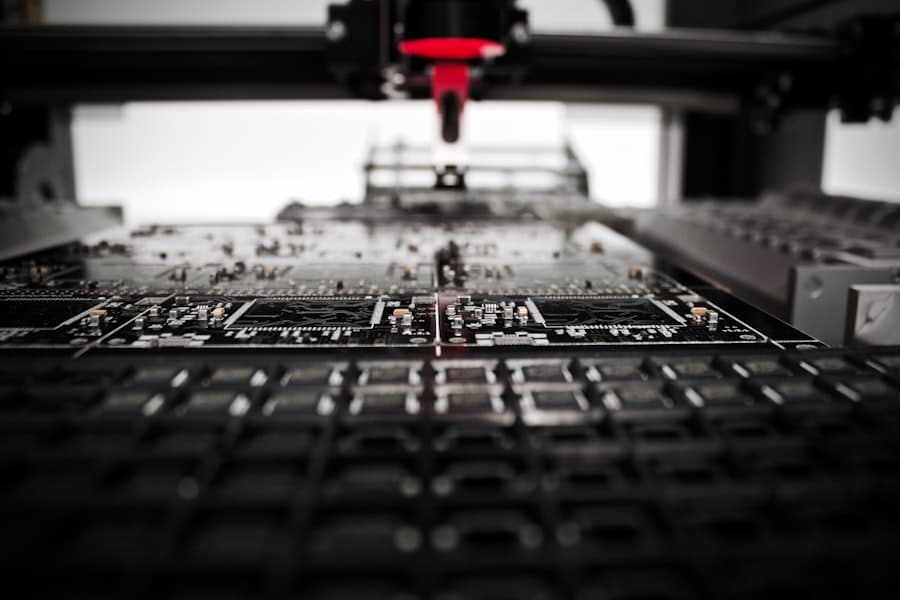The advent of artificial intelligence (AI) has ushered in a new era of technological innovation, particularly in the realm of autonomous systems. These systems, which operate independently of human intervention, leverage AI algorithms to perform tasks ranging from simple navigation to complex decision-making processes. The integration of AI into autonomous systems has transformed industries such as transportation, agriculture, and logistics, enabling them to operate more efficiently and effectively.
As these systems continue to evolve, they are increasingly capable of handling intricate tasks that were once thought to be the exclusive domain of human operators. AI-powered autonomous systems are characterized by their ability to learn from data, adapt to changing environments, and make informed decisions based on real-time information. This capability is particularly crucial in applications where human oversight may be limited or impractical.
For instance, drones equipped with AI can autonomously navigate through challenging landscapes, while self-driving vehicles can interpret road conditions and traffic patterns without human input. The implications of these advancements are profound, as they not only enhance operational efficiency but also pave the way for new business models and opportunities across various sectors.
Key Takeaways
- AI-powered autonomous systems are revolutionizing various industries by enabling machines to operate without human intervention.
- AI plays a crucial role in navigating complex terrains by processing large amounts of data and making real-time decisions.
- Challenges faced by AI-powered autonomous systems include unpredictable environments, cybersecurity threats, and ethical considerations.
- Technologies and sensors such as LiDAR, radar, and GPS are used for navigation in complex terrains, enabling accurate and safe movement.
- Case studies of successful navigation in complex terrains demonstrate the potential of AI-powered autonomous systems in industries such as transportation, agriculture, and mining.
The Role of AI in Navigating Complex Terrains
Navigating complex terrains presents a unique set of challenges that require sophisticated algorithms and advanced sensor technologies. AI plays a pivotal role in enabling autonomous systems to interpret vast amounts of data from their surroundings, allowing them to make real-time decisions that ensure safe and efficient navigation. For example, in the context of autonomous vehicles, AI algorithms analyze data from cameras, LiDAR, and radar to create a comprehensive understanding of the environment.
This includes identifying obstacles, recognizing road signs, and predicting the behavior of other road users. Moreover, AI enhances the ability of autonomous systems to adapt to dynamic environments. In scenarios where terrain conditions may change rapidly—such as during adverse weather events or in rugged landscapes—AI algorithms can process incoming data to adjust navigation strategies accordingly.
This adaptability is crucial for applications like agricultural drones that must navigate varying field conditions or search-and-rescue robots deployed in disaster-stricken areas. By leveraging machine learning techniques, these systems can improve their navigation capabilities over time, learning from past experiences to enhance future performance.
Challenges Faced by AI-Powered Autonomous Systems
Despite the remarkable advancements in AI-powered autonomous systems, several challenges remain that hinder their widespread adoption and effectiveness. One significant challenge is the issue of data quality and availability. Autonomous systems rely heavily on accurate and comprehensive datasets to function optimally.
In many cases, the data collected may be incomplete or noisy, leading to potential errors in navigation and decision-making. For instance, if an autonomous vehicle encounters an unmarked road hazard due to insufficient training data, it may not respond appropriately, resulting in dangerous situations. Another challenge lies in the ethical considerations surrounding AI decision-making processes.
Autonomous systems must often make split-second decisions that can have life-or-death consequences. For example, in a scenario where a self-driving car must choose between swerving to avoid a pedestrian or staying on course and potentially harming its passengers, the ethical implications of such decisions are profound. The lack of clear guidelines on how these systems should prioritize human safety raises concerns about accountability and transparency in AI decision-making.
Technologies and Sensors Used for Navigation
The effectiveness of AI-powered autonomous systems in navigating complex terrains is largely dependent on the technologies and sensors employed in their design. A variety of sensors are utilized to gather data about the environment, including cameras, LiDAR (Light Detection and Ranging), radar, and GPS (Global Positioning System). Each of these sensors contributes unique information that enhances the system’s understanding of its surroundings.
Cameras provide visual data that can be processed using computer vision techniques to identify objects, road signs, and lane markings. LiDAR offers precise distance measurements by emitting laser pulses and measuring the time it takes for them to return after hitting an object. This technology is particularly valuable for creating detailed 3D maps of the environment.
Radar complements these technologies by detecting objects at longer ranges and in adverse weather conditions where visibility may be compromised. GPS is essential for providing location data, enabling autonomous systems to determine their position relative to predefined maps. The integration of these sensors is facilitated by advanced algorithms that fuse the data into a coherent representation of the environment.
This sensor fusion process allows autonomous systems to achieve a higher level of situational awareness, which is critical for safe navigation in complex terrains. For instance, a self-driving car may use data from multiple sensors to accurately identify pedestrians crossing the street while simultaneously monitoring traffic signals and other vehicles.
Case Studies of Successful Navigation in Complex Terrains
Numerous case studies illustrate the successful application of AI-powered autonomous systems in navigating complex terrains across various industries. One notable example is the use of autonomous drones for agricultural monitoring and crop management. These drones are equipped with advanced imaging sensors that capture high-resolution images of fields, allowing farmers to assess crop health and identify areas requiring attention.
By analyzing this data using AI algorithms, farmers can make informed decisions about irrigation, fertilization, and pest control, ultimately enhancing yield while minimizing resource usage. Another compelling case study involves autonomous vehicles operating in urban environments. Companies like Waymo and Tesla have made significant strides in developing self-driving cars capable of navigating complex cityscapes filled with pedestrians, cyclists, and unpredictable traffic patterns.
These vehicles utilize a combination of sensors and AI algorithms to interpret real-time data from their surroundings, enabling them to navigate safely through busy intersections and respond appropriately to dynamic conditions. The success of these autonomous vehicles demonstrates the potential for AI-powered systems to revolutionize transportation by reducing accidents and improving traffic flow.
Future Developments and Advancements in AI-Powered Autonomous Systems
The future of AI-powered autonomous systems is poised for remarkable advancements as technology continues to evolve at an unprecedented pace. One area of focus is the development of more sophisticated machine learning algorithms that enhance the ability of these systems to learn from experience. Reinforcement learning, for instance, allows autonomous systems to improve their performance through trial and error by receiving feedback from their environment.
This approach could lead to more robust navigation capabilities in unpredictable terrains. Additionally, advancements in sensor technology will play a crucial role in enhancing the capabilities of autonomous systems. Emerging technologies such as 5G connectivity will enable faster data transmission between vehicles and infrastructure, facilitating real-time communication that enhances situational awareness.
Furthermore, improvements in sensor miniaturization will allow for more compact and efficient designs, making it feasible to deploy autonomous systems in a wider range of applications—from personal drones to delivery robots navigating urban landscapes. As AI continues to advance, there is also potential for greater collaboration between autonomous systems and human operators. Hybrid models that combine human oversight with autonomous decision-making could provide a balanced approach that leverages the strengths of both entities.
This collaboration could be particularly beneficial in high-stakes environments such as healthcare or emergency response, where human intuition and empathy complement the efficiency of AI-driven systems.
Ethical and Social Implications of AI-Powered Autonomous Systems
The rise of AI-powered autonomous systems brings forth a myriad of ethical and social implications that warrant careful consideration. One pressing concern is the potential for job displacement as automation becomes more prevalent across various industries.
Addressing this challenge requires proactive measures such as reskilling programs and policies that promote workforce transition into new roles created by technological advancements. Moreover, the ethical dilemmas associated with decision-making in autonomous systems cannot be overlooked. As previously mentioned, scenarios involving life-or-death choices raise questions about accountability and moral responsibility.
Who should be held accountable if an autonomous vehicle causes an accident? Should developers prioritize passenger safety over pedestrian safety? These questions highlight the need for clear ethical frameworks that guide the development and deployment of AI-powered systems.
Public perception also plays a critical role in shaping the acceptance of autonomous technologies. Trust in these systems is essential for their widespread adoption; however, incidents involving accidents or malfunctions can erode public confidence. Transparency in how these systems operate and make decisions is vital for fostering trust among users and stakeholders alike.
Conclusion and the Impact of AI-Powered Autonomous Systems on Various Industries
AI-powered autonomous systems are set to redefine numerous industries by enhancing efficiency, safety, and productivity across various applications. From agriculture to transportation, these technologies are already making significant contributions that promise to reshape how we interact with our environment. As advancements continue to unfold, it is imperative for stakeholders—including developers, policymakers, and society at large—to engage in meaningful discussions about the ethical implications and societal impacts associated with these technologies.
The journey toward fully realizing the potential of AI-powered autonomous systems will undoubtedly involve navigating challenges related to data quality, ethical decision-making, and public trust. However, with continued innovation and collaboration among various sectors, there is immense potential for these systems to drive positive change across industries while addressing the complexities inherent in their deployment. As we look ahead, it becomes increasingly clear that AI-powered autonomous systems will play a pivotal role in shaping our future landscape—one where technology works harmoniously alongside humanity to create safer and more efficient environments for all.
In a related article, Unlock Your Creative Potential with the Samsung Galaxy Book Flex2 Alpha, explores how technology can enhance creativity and productivity. Just as AI-powered autonomous systems are revolutionizing navigation through complex terrains, the Samsung Galaxy Book Flex2 Alpha is unlocking new possibilities for creative professionals. By leveraging cutting-edge technology, both autonomous systems and devices like the Galaxy Book Flex2 Alpha are pushing the boundaries of what is possible in their respective fields.
FAQs
What are AI-powered autonomous systems?
AI-powered autonomous systems are advanced technologies that use artificial intelligence to make decisions and perform tasks without human intervention. These systems can navigate complex terrains, make real-time adjustments, and adapt to changing environments.
How do AI-powered autonomous systems navigate complex terrains?
AI-powered autonomous systems use a combination of sensors, cameras, radar, lidar, and GPS to perceive their surroundings. They then use advanced algorithms and machine learning to analyze this data and make decisions about how to navigate through complex terrains.
What are some examples of complex terrains that AI-powered autonomous systems can navigate?
AI-powered autonomous systems can navigate a wide range of complex terrains, including urban environments with heavy traffic, construction sites, agricultural fields, and rugged natural landscapes. These systems are designed to handle obstacles, uneven terrain, and unpredictable conditions.
What are the benefits of using AI-powered autonomous systems for navigating complex terrains?
Using AI-powered autonomous systems for navigating complex terrains can improve safety, efficiency, and productivity. These systems can operate in hazardous or hard-to-reach areas, reduce the risk of human error, and optimize routes to save time and resources.
What are some challenges that AI-powered autonomous systems face when navigating complex terrains?
Challenges for AI-powered autonomous systems navigating complex terrains include accurately interpreting and responding to dynamic environments, ensuring robustness and reliability in all conditions, and addressing ethical and legal considerations related to autonomous decision-making.



